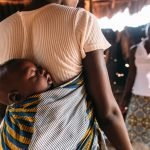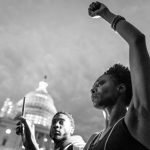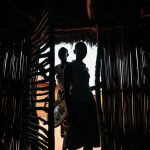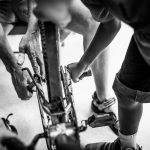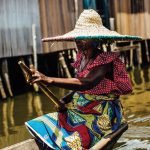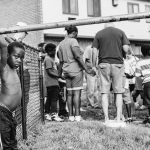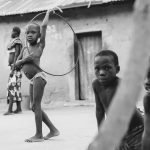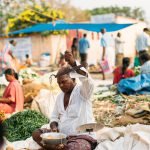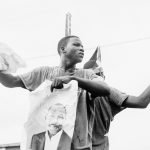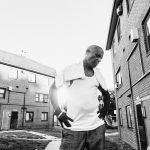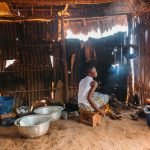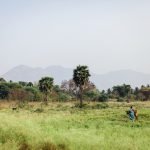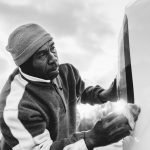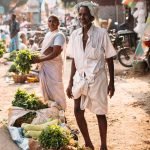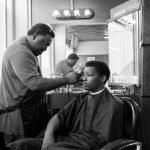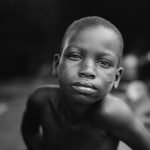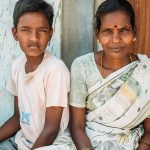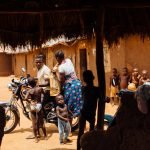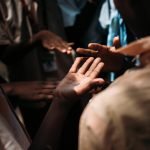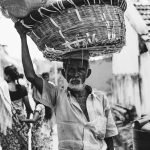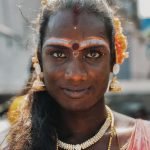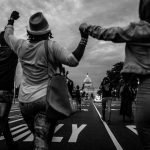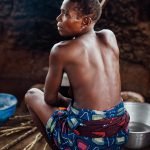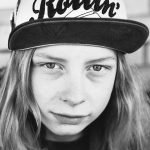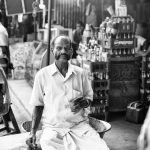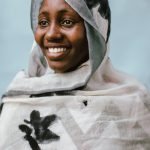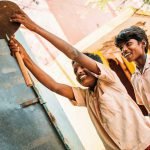+ By Emmy Nicklin + Photos by Allison Zaucha
A black-and-white image of hardworking Greenville line cooks quickly and expertly prepare warm meals amid typical kitchen chaos. A family of Iraqi refugees caught in a tender moment outside their Baltimore row house—the mother’s black headscarf drapes gracefully around her neck, her arms wrap tightly around her youngest son, her two older sons and husband stand nearby, staring in different directions, lost in thought or gratitude for their new home. A white man and black woman embrace in the middle of a Black Lives Matter march, frozen for an instant of absolute love and empathy. Allison Zaucha’s photographs are powerful. Her current personal favorite (it changes all the time) is of a mother in Benin, Africa, crouched over a smoky fire, cooking her family’s dinner. “You can see all the muscles in her back and the strength in supporting her family,” Zaucha says of the photo, which she took last year.
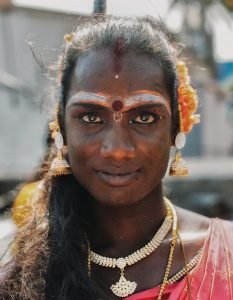 Themes of courage, strength, and resilience are common throughout Zaucha’s work, and understandably so. The daughter of a hardworking single mother, Zaucha learned the importance of these traits firsthand while growing up in Philadelphia. “That’s the lens that I’ve seen life through,” she says. “Hard work, determination . . . I don’t think I’d be doing what I’m doing if it weren’t for [my mom].”
Themes of courage, strength, and resilience are common throughout Zaucha’s work, and understandably so. The daughter of a hardworking single mother, Zaucha learned the importance of these traits firsthand while growing up in Philadelphia. “That’s the lens that I’ve seen life through,” she says. “Hard work, determination . . . I don’t think I’d be doing what I’m doing if it weren’t for [my mom].”
The image of the mother by the fire is one of many that Zaucha took for her recently published Dreams That Could Be (October 2016), a photography book documenting the lives of four young African and Indian students—Julienne, Victorine, Monish, and Divya—determined to complete their education and carve out better paths for themselves, their families, and their communities. Zaucha photographed, wrote, designed, and produced the book pro bono for Givology, a nonprofit devoted to making a sound education accessible for all children around the world. Driven by a desire to effect positive change, Zaucha devoted nearly two years of her life to completing the project, 21 days of which were spent in India and Africa. There, she immersed herself in the lives of the students and their families, producing hundreds of stunningly beautiful photographs that show the full breadth of their struggles, optimism, and strength.
Zaucha was determined to give each student a voice and show the true successes that happen through education: “[I thought] why don’t we look at the students who are really working and give them a name . . . Don’t call them ‘Africa,’ call them ‘Julienne,’” she says on a bitterly cold January night at Annapolis’ Sailor Oyster Bar on West Street. “I think that my greater purpose is to help people,” she continues, “and with my photography, I can be a vehicle to help people and promote positive change.” And help them she has. The fall launch of Dreams That Could Be has brought in more than $14,000 in support of educational programs for students like Julienne, Victorine, Monish, and Divya.
 With her latest project, Zaucha continues documenting stories of strength and hope, but much closer to home, in the public housing neighborhood of Newtowne 20 in Annapolis. For the past six months, Zaucha has visited the community every week, attending Bible studies and kickball games, even teaching a photography workshop, while documenting three residents—Ladawn, Frank, and Tony—and their stories of remarkable persistence. “[I wanted to produce] positive media about a community that’s so stigmatized and stereotyped,” she explains. One of her subjects had been homeless for more than 42 years before recently moving into his first apartment.
With her latest project, Zaucha continues documenting stories of strength and hope, but much closer to home, in the public housing neighborhood of Newtowne 20 in Annapolis. For the past six months, Zaucha has visited the community every week, attending Bible studies and kickball games, even teaching a photography workshop, while documenting three residents—Ladawn, Frank, and Tony—and their stories of remarkable persistence. “[I wanted to produce] positive media about a community that’s so stigmatized and stereotyped,” she explains. One of her subjects had been homeless for more than 42 years before recently moving into his first apartment.
The concept for the Newtowne 20 project came to Zaucha after learning of a community program called Love 1, created by Pastor Joey Tomassoni of the Downtown Hope Church. “I’m really inspired by the drive that’s within people,” Zaucha says. “When I do documentary photography, I don’t want to photograph a begging homeless man. I want to photograph the homeless man that’s working his butt off, trying to survive. I’m always drawn to the hardworking person.” And when it comes to working hard, Zaucha does just that.
A few nights later, on an equally chilly January evening, the self-described type A photographer is shooting a lively restaurant scene at Preserve on Main Street. She moves quickly and with intention, holding her trusty Canon at the ready as she sees her shot across the room and does whatever is needed to get it. She easily engages her subjects, putting them at ease with her laid-back, positive warmth while simultaneously running through shot lists in her head, waiting for the perfect scene to come into frame, and then executing it calmly, thoroughly.
“In my mind,” she says later, describing her process, “I’m seeing all these things happening all at once. I’m subconsciously watching everything. You see frames all the time—like those guys talking [over there], those connections happening, that guy with the striped shirt—everything’s a picture. I can’t help it. Everything’s moving fast . . . That’s the world. [But] if I’m gonna tell a story the way that I want to tell a story, I need to slow down and spend time there . . . I’m learning to wait, to give [myself] time to wait for the shot.”
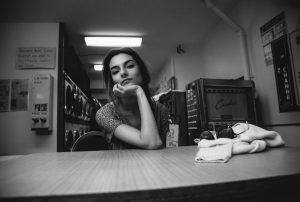 After finishing the shoot, Zaucha describes her early days as a photographer. As a fourth grader, Zaucha was setting up photo shoots with her mother’s dresses and her cat, Spoo, using her grandfather’s old Konica film camera. But it wasn’t until her time at East Carolina University, first working at her college newspaper and then entering and winning a national art exhibition for her photography, that she decided to pursue her art professionally. “That was the slap in the face that I needed to go get it,” she says.
After finishing the shoot, Zaucha describes her early days as a photographer. As a fourth grader, Zaucha was setting up photo shoots with her mother’s dresses and her cat, Spoo, using her grandfather’s old Konica film camera. But it wasn’t until her time at East Carolina University, first working at her college newspaper and then entering and winning a national art exhibition for her photography, that she decided to pursue her art professionally. “That was the slap in the face that I needed to go get it,” she says.
These days, the Annapolis resident travels up and down the East Coast, working as a portrait and documentary photographer for numerous clients ranging from nonprofits (e.g., Aid India and Cercle Social) to publications (e.g., Life and Thyme and Up.St.ART Annapolis) to companies (e.g., sweetgreen and Brooks Brothers). She’s inspired by several artists, including photographers Mary Ellen Mark, Cassandra Giraldo, and Henri Cartier-Bresson, and often Googles their images before heading off to work.
An idealist at heart, Zaucha’s mission statement on her website reads: “[T]o empower viewers to think about the universal conditions that affect humanity and to promote positive change in their communities.” It’s a lofty goal, but she means every word. “It’s not about me, in the truest sense,” she says, “It’s about the people in the pictures, and it’s about that story. Photography is not changing the world; it’s the work that’s done in the photos that’s shaping the world.” █


